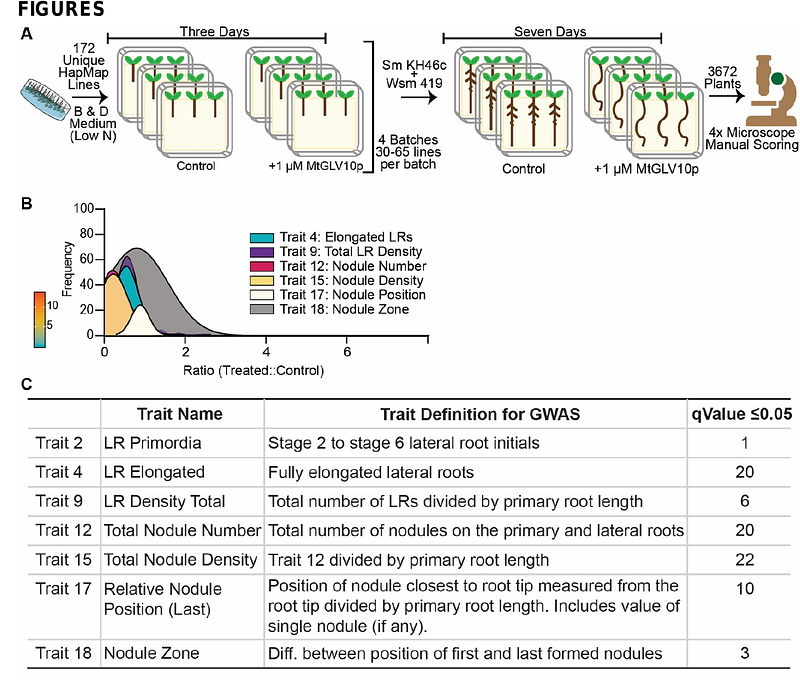A Multitrait Genome-Wide Association Study Reveals a Requirement for the Strigolactone Receptor DWARF14 in Optimal GOLVEN10 Signaling

A Multitrait Genome-Wide Association Study Reveals a Requirement for the Strigolactone Receptor DWARF14 in Optimal GOLVEN10 Signaling
Roy, S.; Kang, Y.; Zhang, S.; Torres-Jerez, I.; Jain, D.; Sanchez, B.; Burghardt, L.; Cheng, X.; Wen, J.; Murray, J. D.; Scheible, W.-R.; Udvardi, M.
AbstractGOLVEN/ROOT MERISTEM GROWTH FACTOR family of signaling peptides have been shown to control root lateral organ number, density and positioning in plants, although the signaling pathways involved remain obscure. A diverse set of 171 Medicago truncatula HapMap accessions with variation in responses to the GOLVEN 10 peptide, GLV10, were used to identify 74 significant loci controlling seven traits related to nodule formation and root architecture. Importantly, a single nucleotide polymorphism (SNP) in the upstream region of the MtGLV10 peptide-inducible strigolactone receptor gene, MtDWARF14 was significantly associated with insensitivity of nodule density to GLV10, suggesting a link between strigolactone signaling and GLV10 responsiveness. Three independent d14 mutants of the DWARF14 gene were found to hypernodulate, while overexpression of the gene led to reduction in nodule number, phenocopying GLV10. A null mutant, mtd14-1, remained sensitive to GLV10s effect on nodule density. However, at the transcriptional level, the mutant failed to effectively induce the expression of the GOLVEN marker genes, MtPLETHORA3 and MtPINLIKES2. Our study uncovers a hitherto unknown link between the strigolactone and GLV peptide signaling pathways using genotype x environment analysis of Medicago HapMap lines and provides a putative molecular mechanism for recovery from frost damage to fine roots.


